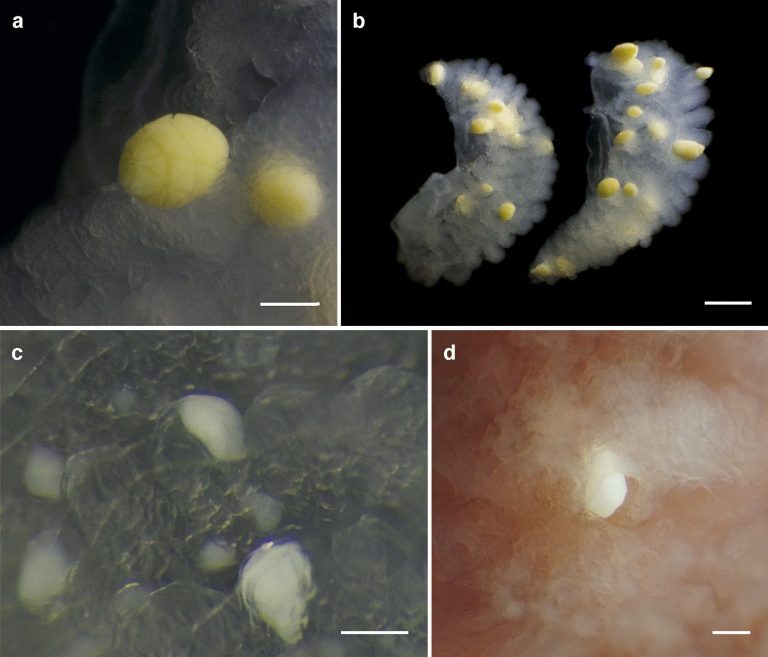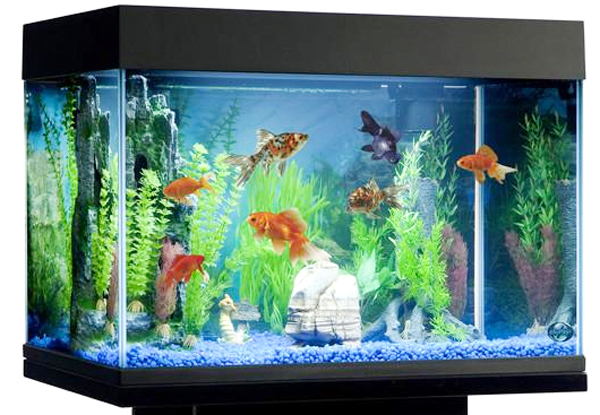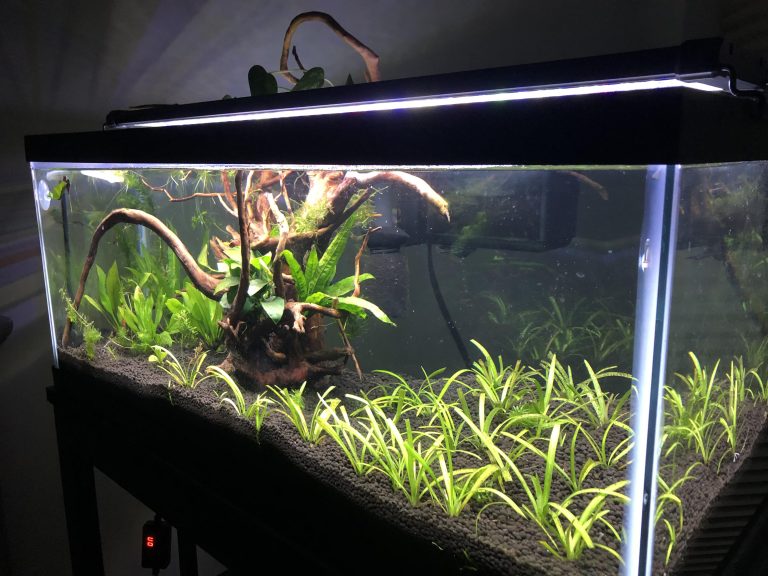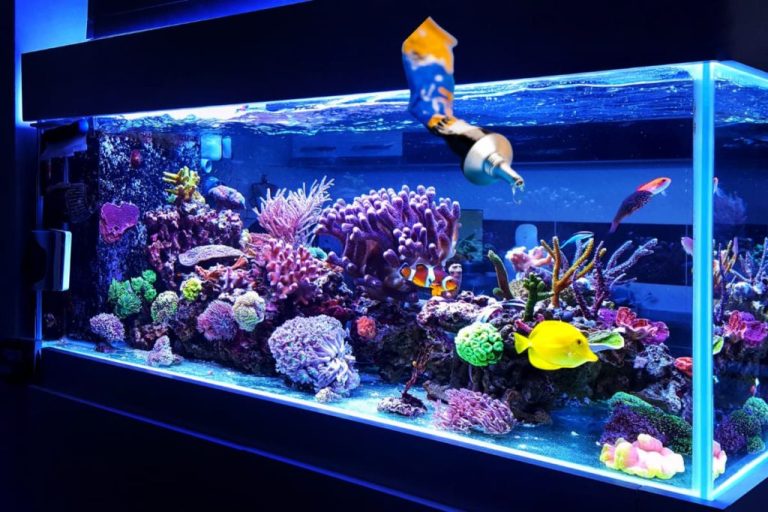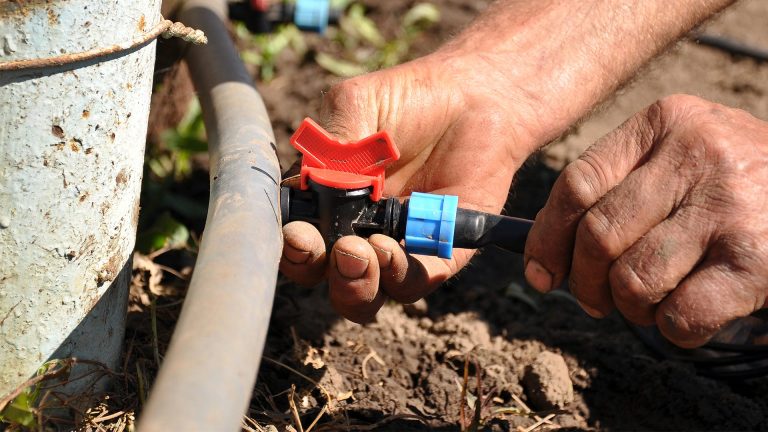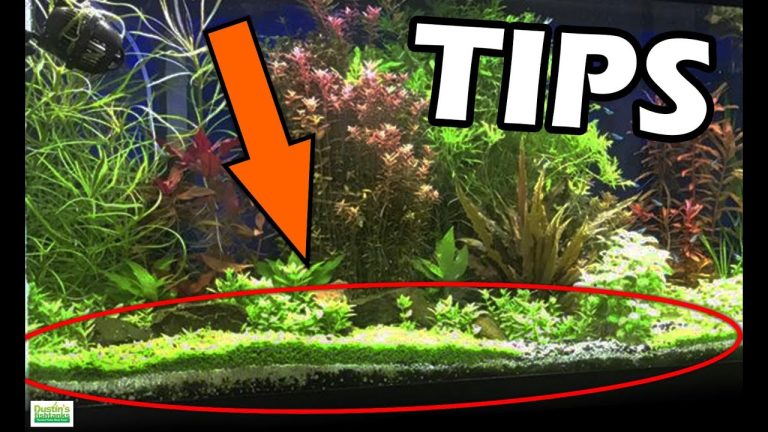What Do Copepods Look Like in Tank: Unveiling Their Fascinating Appearance
Copepods in tanks are small, shrimp-like creatures that have a transparent body with several pairs of swimming legs. They are often used as a natural food source for fish.
Copepods play a vital role in maintaining the ecosystem of aquarium tanks. These small, shrimp-like creatures are highly beneficial, acting as live feed for various fish species. Known for their transparent bodies, copepods have multiple pairs of swimming legs, enabling them to move swiftly in water.
With their distinct shape and behavior, copepods have become popular additions to both freshwater and saltwater aquariums. Beyond serving as a natural food source, these fascinating organisms contribute to the overall health and balance of the tank, making them valuable companions for fish enthusiasts. In this article, we will explore the appearance, characteristics, and benefits of copepods in a tank environment.

Credit: adoptandshop.org
The Importance Of Understanding Copepod Appearance In Aquariums
Copepods: Key Players In The Aquatic Ecosystem
Copepods, those tiny crustaceans found in freshwater and saltwater environments, play a crucial role in maintaining the balance and health of aquariums. These small but mighty creatures are an essential part of the food chain, serving as a primary food source for many fish and invertebrates.
Exploring The Visual Appeal Of Copepods In Tanks
Copepods may be small, but they certainly make a big visual impact in aquariums. With their graceful swimming movements and intriguing body shapes, they add a touch of life and vibrancy to the tank. Here are a few characteristics that define the visual appeal of copepods:
- Translucent bodies: Copepods typically have translucent bodies, allowing you to observe their internal organs and structures. This transparency adds an element of intrigue and fascination to your aquarium, especially when paired with appropriate lighting.
- Segmented bodies: Their bodies are segmented, with distinct body sections separated by joints. This segmented structure provides copepods with flexibility and agility, enabling them to navigate the aquarium environment with ease.
- Antennae and appendages: Copepods have long antennae and appendages that they use for sensory perception, swimming, and capturing food. These delicate structures gracefully move through the water, creating a mesmerizing sight for aquarium enthusiasts.
How The Appearance Of Copepods Impacts Aquarium Health
The appearance of copepods goes beyond their visual appeal; it directly affects the overall health and well-being of your aquarium. Here’s why understanding copepod appearance is crucial:
- Indicator of water quality: Copepods are highly sensitive to changes in water quality, making them an excellent indicator species. If copepods start to exhibit unusual behaviors, have abnormal growth patterns, or decrease in numbers, it could indicate imbalances or issues within the tank’s ecosystem.
- Biological filtration: Copepods, along with other microorganisms, contribute to the biological filtration of the aquarium. They help break down organic waste, excess nutrients, and detritus, preventing their accumulation and maintaining water quality.
- Food source for other species: Many fish and invertebrates rely on copepods as a primary source of nutrition. By ensuring that your aquarium has a healthy copepod population, you are providing an important food source for your tank inhabitants, promoting their overall vitality and well-being.
Understanding the appearance and behavior of copepods in your tank is not only visually appealing but also serves as a vital aspect of maintaining a healthy aquatic ecosystem. By appreciating and valuing the role of these tiny creatures, you can enhance the overall beauty and sustainability of your aquarium.
Physical Characteristics Of Copepods
Copepods are fascinating creatures that play a crucial role in maintaining the delicate balance of marine ecosystems. These tiny crustaceans exhibit a wide range of physical characteristics that make them unique and interesting to observe in a tank setting. In this section, we will delve into the physical features of copepods, including their size and shape variations, color patterns and pigmentation, as well as notable physical features such as their antennae, mouthparts, and appendages.
Size And Shape Variations Among Copepod Species:
- Copepods come in various sizes, ranging from as small as 0.5 millimeters to a few centimeters in length. These variations in size depend on the species and environmental factors.
- Their bodies are generally elongated and cylindrical, with some species having a more streamlined shape, while others may appear more rounded or flattened.
Color Patterns And Pigmentation In Copepods:
- Copepods showcase a remarkable array of colors and patterns, adding vibrancy to their appearance. These color variations serve different purposes, such as camouflage, attracting mates, or warning predators.
- Some copepods feature translucent bodies, which allow light to pass through, while others may exhibit vibrant hues of red, green, blue, or orange.
Notable Physical Features: Antennae, Mouthparts, And Appendages:
- Copepods possess a pair of antennae that act as sensory organs, helping them detect changes in the water and navigate their surroundings.
- Their mouthparts, located on the front of their bodies, are designed for feeding. These structures vary among species and may include mandibles, maxillae, and maxillipeds.
- Copepods also have specialized swimming appendages called swimming legs, which enable them to move through the water in a distinct manner. These appendages vary in shape and size depending on the species and their lifestyle.
As you observe copepods in your tank, take note of their size, shape, colors, and the intricate details of their antennae, mouthparts, and appendages. By appreciating their physical characteristics, you can gain a deeper understanding of these fascinating creatures and their vital role in maintaining a healthy aquatic environment.
Understanding Copepod Life Stages And Their Changing Appearance
Copepods are tiny crustaceans commonly found in marine and freshwater environments, including aquarium tanks. These minute creatures play a vital role in the overall health and balance of the tank ecosystem, serving as an important food source for many fish species.
Understanding the life stages and changing appearance of copepods can provide valuable insights into their behavior and contributions to the tank environment.
The Life Cycle Of Copepods: From Nauplius To Adult
- Copepods go through several distinct stages of development, starting from nauplius larvae and eventually maturing into adults.
- The life cycle begins with the hatching of nauplius larvae, which are initially small and translucent, often referred to as “baby copepods.”
- As the nauplius larvae grow, they go through several molt stages, shedding their exoskeleton and developing into copepodites.
- Copepodites have a more pronounced body structure and begin to exhibit characteristic features that differentiate them from the earlier larvae stages.
- The final molt stage results in the transformation of copepodites into adult copepods, which possess fully developed reproductive capabilities.
Distinctive Features At Each Life Stage
- Nauplius larvae typically have a round, elongated body shape with rudimentary appendages, making them appear worm-like.
- Copepodites undergo significant changes in body structure, including the development of antennae, swimming legs, and a segmented body.
- They start to exhibit more distinct coloration, often appearing translucent or slightly pigmented, as compared to the earlier larvae stage.
- Adult copepods have a notable body shape, similar to elongated bugs, with a segmented body and well-defined appendages.
- They showcase pigmentation variations, ranging from transparent to light beige, depending on the species and their environment.
Identifying Copepod Age Through Appearance
- The size of copepods at different life stages can help determine their age, with nauplius larvae being the smallest and adults being the largest.
- Older copepods generally have a better-defined body structure, more prominent appendages, and a more vibrant coloration.
- The presence of eggs or egg sacs attached to the female’s body indicates maturity and reproductive capacity.
- Adult copepods can exhibit slight variations in appearance based on species, but the overall body shape and coloration remain consistent within an individual species.
Understanding the life cycle and changing appearance of copepods in your tank can provide valuable insights into their development, reproductive capacity, and overall health. By recognizing different life stages and identifying copepod age through appearance, you can observe and appreciate the diversity and contributions of these tiny creatures within your aquarium ecosystem.
Identifying Copepod Species Based On Appearance
Copepods are fascinating organisms commonly found in aquariums. These tiny crustaceans play a vital role in maintaining the ecosystem balance of the tank. Many copepod species have distinct features that make them easily distinguishable from one another. In this section, we will delve into identifying copepod species based on their appearance.
Common Copepod Species Found In Aquariums:
- Tigriopus californicus: This species is characterized by its reddish-brown coloration and torpedo-shaped body. It has long antennae and two pairs of swimming legs, which it uses to zoom through the water. Keep an eye out for its distinctive eye patch near the head.
- Parvocalanus crassirostris: With its slender body and elongated first antennae, this species is distinguishable. It has a transparent appearance, allowing you to observe its internal organs. Look for its prominent mouthparts, which it uses to feed on microalgae and detritus.
- Apocyclops panamensis: The most noticeable feature of this species is the large, bulbous eye located on each side of its head. It has a compact body shape and can vary in color from pale yellow to brownish-green.
Distinguishing Features Of Different Copepod Families:
- Calanoida: Members of this family have a streamlined body shape, often resembling a tiny shrimp. They possess long antennae and swim using their multiple pairs of swimming legs. Look for their segmented bodies and tail-like posterior.
- Harpacticoida: Harpacticoids are small, benthic copepods that inhabit the substrate of the aquarium. They have a more robust and rounded body shape compared to other families. Their antennae are often shorter, and they have a distinctive gnathal region.
- Cyclopoida: Cyclopoids are recognized by their cylindrical body shape and their single, unsegmented swimming leg. They have a pair of large compound eyes and shorter antennae. Look for their rapid, jerky swimming movements.
Utilizing Identification Guides And Resources:
- Id guides: Many comprehensive identification guides are available that provide detailed descriptions and images of copepod species. These guides can be useful in pinpointing specific characteristics and narrowing down the possibilities.
- Online communities: Engage with the aquarium community through forums and social media groups. Here, you can share images of copepods you’ve found and ask for assistance in identifying them. Experienced aquarists can often provide valuable insights.
- Local experts: Reach out to local aquarium stores or hobbyist groups for expert advice. These individuals have hands-on experience with a wide variety of copepod species and can guide you in identifying the ones in your tank.
By familiarizing yourself with the common copepod species found in aquariums and understanding their distinguishing features, you will be better equipped to identify and appreciate the fascinating world of these tiny crustaceans. So, keep a keen eye out for their unique characteristics and embark on a journey of discovery within your tank.
The Visual Interactions Between Copepods And Tank Environment
Copepods, those tiny but fascinating creatures, can bring life and visual interest to your tank environment. From their behavior to the way they interact with plants, rocks, and substrate, copepods have a significant impact on the aesthetics of your aquarium.
Understanding these interactions can help you appreciate how copepods contribute to the overall biodiversity and visual appeal of your tank.
Copepod Behavior And Their Influence On Tank Aesthetics:
- Copepods exhibit unique behaviors that make them captivating to watch in your tank.
- Their constant movement and agility can add a dynamic element to your tank’s visuals.
- Copepods’ graceful swimming patterns and energetic foraging activities can enhance the overall aesthetics of your aquarium.
Interactions With Plants, Rocks, And Substrate:
- Copepods interact with plants by grazing on algae and detritus, which can help keep the tank clean and prevent excessive algae growth.
- They may also seek shelter among the plants, adding a sense of realism and natural balance to your tank’s visuals.
- Copepods can crawl on rocks and substrate, exploring every nook and cranny. This adds an element of texture and natural movement to your tank.
How Copepods Contribute To Overall Tank Biodiversity And Visual Appeal:
- Copepods are an important part of the natural food chain in aquarium ecosystems, providing a vital food source for many fish and invertebrates.
- Their presence in your tank can create a more balanced and diverse ecosystem by supporting fish health and reproduction.
- Copepods come in a variety of colors and sizes, adding visual interest and diversity to your tank’s inhabitants.
The visual interactions between copepods and the tank environment are fascinating to watch and can significantly enhance the aesthetics of your aquarium. Their behavior, interactions with plants, rocks, and substrate, as well as their contribution to overall tank biodiversity, all play a role in creating an engaging and visually appealing aquarium.
So sit back, relax, and enjoy the captivating world of copepods in your tank.
Potential Variations In Copepod Appearance Due To Tank Conditions
Copepods, those tiny organisms that inhabit our tanks, come in a fascinating array of shapes and colors. But have you ever stopped to wonder why copepods look different in various tank conditions? Turns out, the appearance of copepods can be influenced by factors such as water quality, temperature, and lighting.
Let’s delve into the potential variations in copepod appearance due to these tank conditions.
Factors Influencing Copepod Appearance: Water Quality, Temperature, And Lighting
- Water quality: The quality of water in your tank plays a significant role in determining the appearance of copepods. Clean water with the right balance of nutrients promotes the growth of copepods, resulting in a healthier and more vibrant appearance. On the other hand, poor water quality can lead to stressed copepods with dull colors and reduced vibrancy.
- Temperature: Like many organisms, copepods are sensitive to temperature fluctuations. The temperature of the tank water can impact their appearance. Copepods tend to thrive in temperatures that are conducive to their optimal growth. When the temperature is too high or too low, copepods may exhibit changes in color or size, reflecting their adaptation to the prevailing conditions.
- Lighting: Lighting conditions in the tank can also influence the visual appearance of copepods. Different species of copepods have adapted to various light intensities and wavelengths. The amount and quality of light in the tank can affect the pigmentation and overall appearance of copepods. Additionally, changing the lighting setup in your tank can create interesting variations in copepod appearance.
Understanding Copepod Adaptations To Different Tank Setups
- Copepods possess remarkable adaptations that enable them to thrive in diverse tank setups. These adaptations include:
- Transparency: Some copepods are transparent, allowing them to blend in with their surroundings and evade predation.
- Camouflage: Certain species of copepods can change their color to match the environment, providing them with effective camouflage against predators.
- Body shape: Copepods exhibit a diverse range of body shapes, enabling them to occupy various niches within the tank and adapt to different feeding strategies.
Manipulating Tank Conditions To Enhance Copepod Visual Attractiveness
- If you want to enhance the visual attractiveness of copepods in your tank, you can manipulate certain tank conditions. Here are some tips:
- Ensure optimal water quality: Regular water testing and maintenance will help maintain a healthy environment for copepods, resulting in more vibrant colors.
- Adjust temperature: Keep the tank temperature within the recommended range for copepods, aiding in their growth and vibrant appearance.
- Choose appropriate lighting: Research the lighting preferences of copepod species in your tank and provide suitable lighting conditions accordingly.
By understanding the influence of factors like water quality, temperature, and lighting on copepod appearance, you can create an environment that not only supports their well-being but also enhances their visual appeal. So, dive into the intricate world of copepods and marvel at the extraordinary variations in their appearance in different tank conditions.
The Impact Of Copepod Appearance On Other Tank Inhabitants
Copepods, those tiny crustaceans that inhabit our aquarium tanks, can have a significant impact on the other organisms within that ecosystem. Whether it’s their appearance, predatory responses, or symbiotic relationships, copepods play a crucial role in maintaining a balanced tank environment.
Let’s explore how the appearance of copepods influences other tank inhabitants.
Predatory Responses Of Other Aquarium Organisms To Copepod Appearance:
- Larger fish species often perceive copepods as a food source and actively hunt them down.
- Invertebrates, such as crabs and shrimps, may also view copepods as a potential meal and display predatory behavior towards them.
- Some species of carnivorous snails, known for their appetite for copepods, will actively search for and consume these tiny crustaceans.
Symbiotic Relationships Between Copepods And Other Species:
- Certain fish species form symbiotic relationships with copepods, where the copepods act as a natural cleaning crew by consuming parasites and dead tissue from the fish.
- Some coral species have been observed to rely on copepods for pollination and reproduction, showcasing a mutually beneficial relationship.
Maintaining A Balanced Ecosystem Through Copepod Presence:
- Copepods serve as an essential food source for many tank inhabitants, providing a sustainable and natural source of nutrition.
- The constant movement of copepods within the tank helps to stimulate the natural behavior and hunting instincts of other organisms.
- Their presence can prevent the proliferation of harmful organisms by outcompeting or predating on them, thus maintaining a healthy diversity within the tank.
Copepods not only add visual interest to aquarium tanks but also have a significant impact on other tank inhabitants. Whether they are preyed upon or form symbiotic relationships, copepods contribute to the overall balance and health of the tank ecosystem.
Their presence ensures a thriving and dynamic environment for all its inhabitants. So, next time you spot those small creatures darting around your tank, appreciate them for the essential role they play in maintaining a harmonious underwater world.
Caring For Copepods To Preserve Their Fascinating Appearance
Copepods are fascinating creatures that inhabit our aquarium tanks, adding beauty and interest to the underwater ecosystem. However, to ensure that these tiny organisms maintain their captivating appearance, proper care and maintenance are essential. By following a few simple practices, you can help preserve the health and beauty of copepods in your tank.
Proper Maintenance And Cleaning Practices In Copepod Tanks
Maintaining a clean tank is crucial for the well-being of copepods. Here are some key points to consider:
- Regularly monitor water parameters such as temperature, ph levels, and salinity, ensuring they are within the optimal range for copepods.
- Perform routine water changes to remove accumulated debris and maintain water quality.
- Use a gentle and non-toxic cleaning agent when cleaning the tank to avoid harming copepods.
- Avoid using chemicals that can harm copepods, such as copper-based medications or aggressive cleaning agents.
Providing Suitable Diet And Nutrition For Copepods
A nutritious diet is vital for copepods to thrive and maintain their stunning appearance. Consider the following points when feeding your copepods:
- Offer a varied diet consisting of phytoplankton, zooplankton, and microalgae to ensure they receive a balanced nutritional intake.
- Avoid overfeeding, as excess food can lead to water quality issues and negatively impact copepod health.
- Consider supplementing their diet with commercial copepod food that is specifically formulated to provide the necessary nutrients.
- Provide a consistent and regular feeding schedule to ensure copepods receive adequate nourishment.
Creating An Environment Conducive To Copepod Health And Beauty
Besides proper maintenance and nutrition, creating the right environment is crucial for the health and beauty of copepods. Consider the following points:
- Ensure appropriate lighting levels, as copepods require a suitable photoperiod to thrive.
- Provide hiding places and vertical structures in the tank for copepods to seek shelter and establish their colonies.
- Avoid introducing predatory species or aggressive tank mates that may harm or eat copepods.
- Maintain stable water parameters and avoid sudden fluctuations or changes that can stress copepods.
By following these practices, you can create an ideal habitat for copepods, allowing them to flourish and exhibit their mesmerizing appearance. Remember, caring for copepods goes beyond their aesthetic appeal – it contributes to the overall health and balance of your aquarium ecosystem.
So make the effort to preserve their fascinating beauty, and your tank will be brimming with life and wonder.
Enhancing The Aesthetic Appeal Of Copepods In Your Aquarium
Incorporating colors and textures to complement copepod appearances:
- Boost the visual appeal of your tank by selecting vibrant and diverse copepod species. Consider the following options:
- Harpacticoids: These small copepods have distinctive coloration, such as red, green, or yellow, and add a lively touch to your tank.
- Cyclopoids: These copepods typically come in shades of brown or black, creating an interesting contrast against other colorful tank inhabitants.
- Calanoids: With their translucent bodies, these copepods bring a delicate, ethereal quality to your aquarium.
Designing aquatic landscapes that showcase copepods effectively:
- Create a natural habitat for copepods by incorporating the following elements into your aquarium design:
- Live rock or coral structures: Provide ample hiding places and surfaces for copepods to thrive and reproduce.
- Dense vegetation: Aquatic plants and seaweeds offer ample opportunities for copepods to explore and forage.
- Driftwood or rock formations: These additions not only create interesting focal points but also provide shelter for copepods.
Showcasing copepod colonies as an attraction within your tank:
- Optimize the visibility of your copepod colonies to make them a captivating attraction:
- Proper lighting: Ensure your tank has appropriate lighting to highlight the movements and colors of copepods. Led lights can be adjusted to emphasize specific areas of interest.
- Controlled water flow: Copepods prefer gentle currents, so utilize equipment like powerheads and wave makers to create a soothing environment.
- Clear viewing areas: Arrange your tank layout to provide clear sightlines to copepod hotspots, allowing viewers to observe their activities easily.
By incorporating these strategies, you can elevate the aesthetic appeal of copepods in your aquarium, creating a visual spectacle that is both captivating and educational for all who observe. Cheers to enhancing the beauty of your underwater world!
Frequently Asked Questions Of What Do Copepods Look Like In Tank
What Do Copepods Look Like In A Tank?
Copepods in a tank are tiny crustaceans with elongated bodies, multiple legs, and antenna-like structures. They range in size from a few millimeters to a couple of centimeters.
How Can I Identify Copepods In My Tank?
To identify copepods in your tank, look for their small size, translucent bodies, and rapid darting movements. They may also have distinct eyes and exhibit a jerky swimming motion.
Are Copepods Beneficial For My Tank?
Yes, copepods are highly beneficial for your tank ecosystem. They serve as natural cleaners, scavenging on detritus and uneaten food, while providing a valuable food source for fish and other organisms.
How Do Copepods Reproduce In A Tank?
Copepods reproduce quickly in a tank through a process called parthenogenesis, where females produce genetically identical offspring without mating. Their population can rapidly increase, supporting a healthy aquatic ecosystem.
Conclusion
Understanding what copepods look like in a tank is crucial for maintaining a healthy aquatic environment. These small crustaceans come in various shapes and sizes, ranging from elongated bodies to more rounded forms. They often have translucent bodies, allowing us to observe their internal structures, such as the digestive system and reproductive organs.
Copepods also possess distinctive appendages, including antennae and swimming legs, which enable them to move efficiently through the water. Their vibrant colors, like reds, greens, and blues, contribute to the overall biodiversity of the tank. By providing a suitable habitat, like live rocks or sand, and managing water parameters, copepods can thrive and serve as a natural source of food for the other inhabitants.
Additionally, regular observation and monitoring of copepod populations can ensure their continued presence and aid in the overall maintenance of the tank’s ecosystem.

